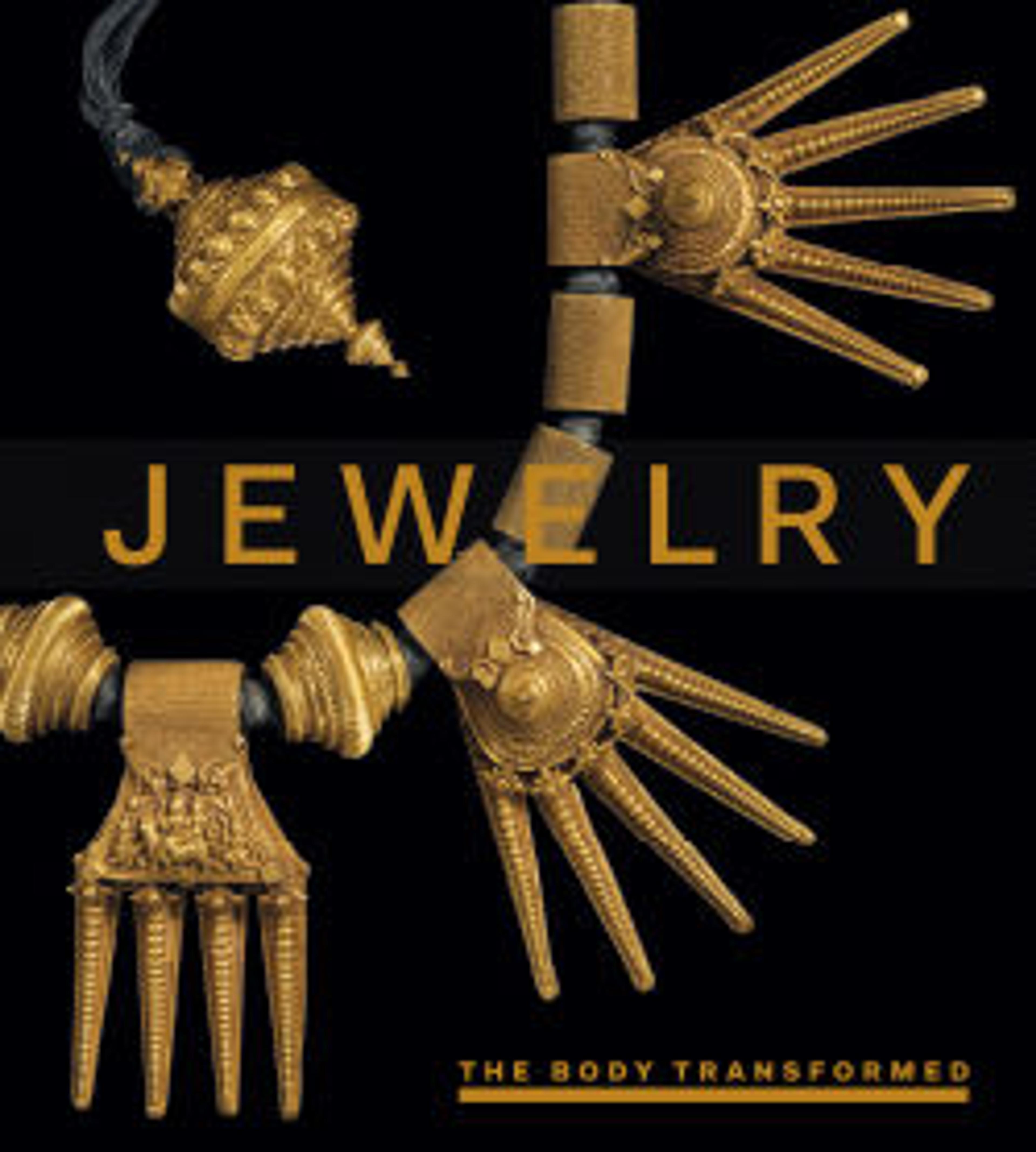Parure of diadem, brooch and necklace with lapis lazuli and enamel
Drawing with designs for a parure of diadem, brooch, and necklace with lapis lazuli and enamel, created by French jeweler Alexis Falize in the Second Empire. All three designs feature roundels made up of a central, round, dark blue lapislazuli stone, framed by a golden roundel with rectangles of white enamel, possibly made to simulate baguette-cut diamonds or brilliants. The diadem consists of three of these roundels, separated by heart motifs made up of gold scrolling motifs, over a strip of round brilliants or diamonds framed by two strips of gold. The design for the brooch consists of one of this roundel, framed inside interlacing scrolling motifs made of gold and semi-abstract fleur-de-lis motifs, also made of gold, and decorated with white enamel. From this central frame hang two gold pyramids with horizontal stripes of white enamel and a round lapislazuli stone at the bottom, and a strip of golden round beads, which holds a smaller roundel, from which hangs another gold pyramid with horizontal stripes of white enamel and a round lapislazuli stone on its bottom. The necklace consists of five roundels of different sizes, the largest one in the center, separated by scrolls of gold that form heart motifs and flowers, and strips of round brilliants or diamonds that hang under the golden scrolling motifs. These designs reveal are of the style of the Second Empire in France, which were inspired on Greek and Roman antiquity and Mediterranean cultures, and featured compositions with semi-precious stones, such as turquoise and lapislazuli, together with enamel and gold.
Artwork Details
- Title:Parure of diadem, brooch and necklace with lapis lazuli and enamel
- Artist:Alexis Falize (French, 1811–98)
- Date:ca. 1830–70
- Medium:Graphite, pen and black ink, watercolor and gouache on brown paper
- Dimensions:Sheet: 8 1/16 × 7 1/16 in. (20.5 × 17.9 cm)
Album: 14 3/16 in. × 11 in. × 9/16 in. (36 × 28 × 1.5 cm) - Classifications:Albums, Drawings, Ornament & Architecture
- Credit Line:The Elisha Whittelsey Collection, The Elisha Whittelsey Fund, 1953
- Object Number:53.670.40
- Curatorial Department: Drawings and Prints
More Artwork
Research Resources
The Met provides unparalleled resources for research and welcomes an international community of students and scholars. The Met's Open Access API is where creators and researchers can connect to the The Met collection. Open Access data and public domain images are available for unrestricted commercial and noncommercial use without permission or fee.
To request images under copyright and other restrictions, please use this Image Request form.
Feedback
We continue to research and examine historical and cultural context for objects in The Met collection. If you have comments or questions about this object record, please contact us using the form below. The Museum looks forward to receiving your comments.
